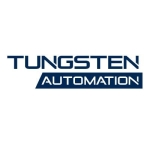What is our primary use case?
My organization is an outsourcing company. We work with various clients. So, we have many use cases. The current use case I'm working on is related to invoice processing.
We don't use attended automation. We use its AI functions a bit. Usually, we work with document understanding.
Currently, I'm using the latest version. It is deployed on the cloud and on-premises. It is the UiPath cloud.
How has it helped my organization?
It is easy and fast to build automation using UiPath. All of our automations are created with UiPath. Usually, we do automation for SLA purposes. Most of the time, the clients don't have enough resources or humans to do the job, and they need automation to improve the SLAs.
It enables us to implement end-to-end automation, starting with the process analysis, robot building, and monitoring of automations. It is good for my company. With these benefits, we can implement it and help with the monitoring.
It has reduced a lot of human error. For example, in the project that I'm working on, people were putting the invoice information on a daily basis. There were more than 20 invoices per day, and each invoice had more than 100 line items. Humans would do a lot of mistyping on the number of packages or the number of items in the package. After we applied the document understanding solution there, we can handle around 90% of invoices, and all of them are correct.
It has absolutely saved us time. It has probably saved us more than 20% of the time. People now have more time.
What is most valuable?
I feel comfortable with UiPath. The thing that I like most is that UiPath has a very large community and a large ecosystem. So, it is easy to connect with other applications or platforms.
What needs improvement?
UiPath Apps is a great feature, but it still needs time to evolve. They need to add more features. It hasn't increased the number of automations we can create while reducing the time it takes to create them.
I don't like the sequence feature in the UiPath. It is difficult to analyze and read the code.
The variable management is really messy. When I look at the code, I don't know where the variable is and in which scope.
For how long have I used the solution?
I have been using this solution for around five years.
What do I think about the stability of the solution?
What do I think about the scalability of the solution?
It is scalable. We have had three enterprises that are really big with more than 1,000 people. The others are small companies.
In our organization, we have 12 people working with it.
How are customer service and support?
I haven't contacted their support. I have been using UiPath's support indirectly. I just put a question on the community forum, and they answer it very fast.
How was the initial setup?
In the previous version of UiPath, it was a nightmare to set it up, but now, it is really comfortable and convenient. Overall, it is fast, but the deployment duration also depends on the solution. If you design a good solution and follow the best practices, it is really fast. It takes a couple of hours at the most.
We always try to split a project into small parts so that we can test each part and apply it easily. I have seen that many people create very big projects, but when you complete them, you cannot test them. It takes a lot of testing from end to end, and we still can't test it completely. That's why we try to split a project into small parts. We can test each part independently, and after the integration, we can deploy with high confidence.
I am not sure how long it takes for our clients to see its benefits after we deploy it for them.
What about the implementation team?
We have a maximum of five people for deployment and maintenance. We sometimes have issues with the infrastructure. In many cases, the infrastructure is handled by the client, and there is no support or cooperation between the RPA department and the IT department. Usually, they will be late, or they did not check our requirements to deploy the bot.
What's my experience with pricing, setup cost, and licensing?
If you use the cloud model of the UiPath, it will reduce a lot of the total cost.
Its AI functionality hasn't enabled us much to automate more processes. Most of the time, when we propose those functions, we don't have an agreement with the client because of the license price. Currently, the license price is the major obstacle.
My advice would be to contact the UiPath sales team directly. I know that they have different license models for different clients and regions.
What other advice do I have?
I would advise following the UiPath Academy and their best practices. That is enough.
They provide very valuable templates for automation purposes. It depends on your purpose, but you can apply the ones that are already there.
I would rate it an eight out of ten.
Disclosure: My company does not have a business relationship with this vendor other than being a customer.





















